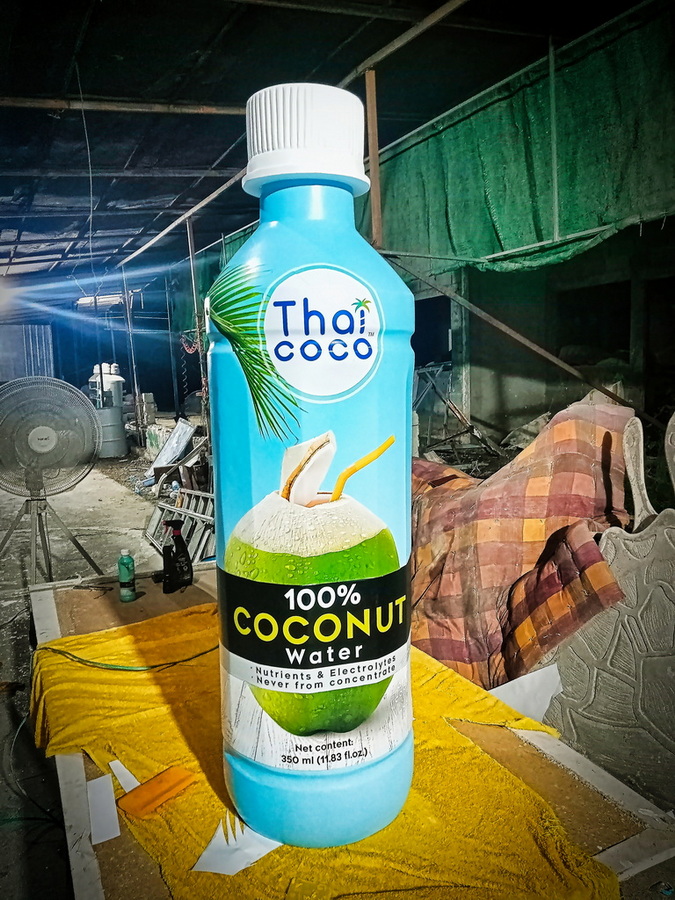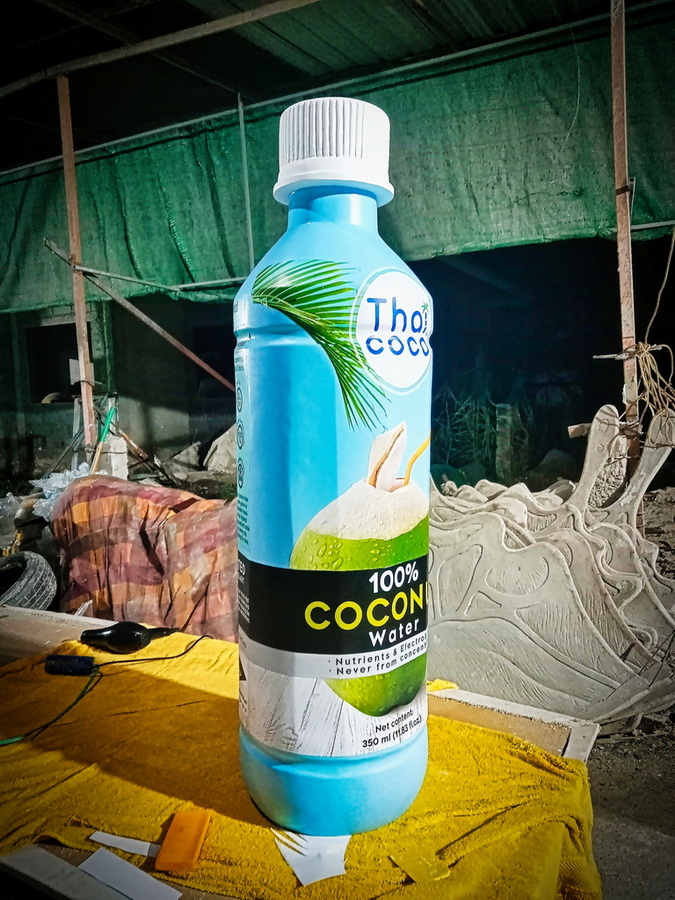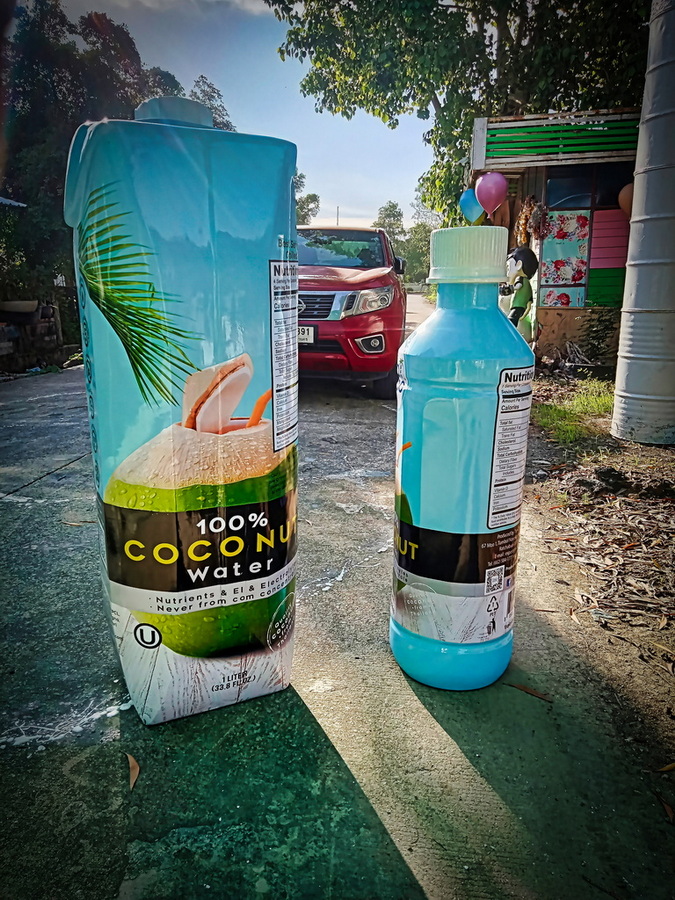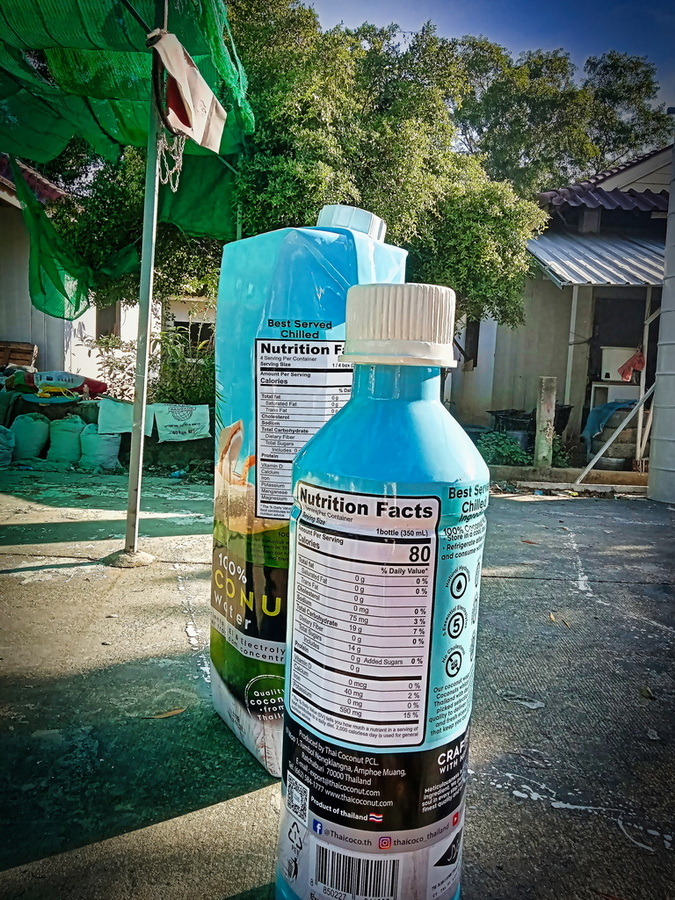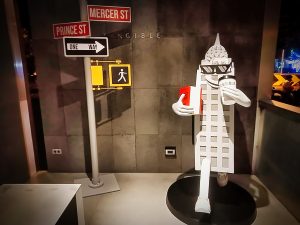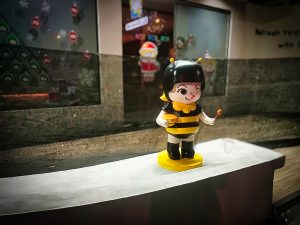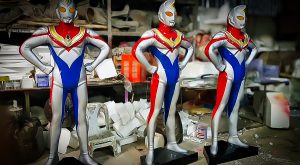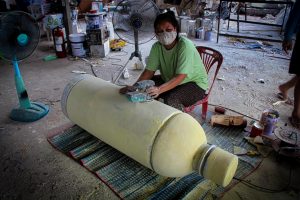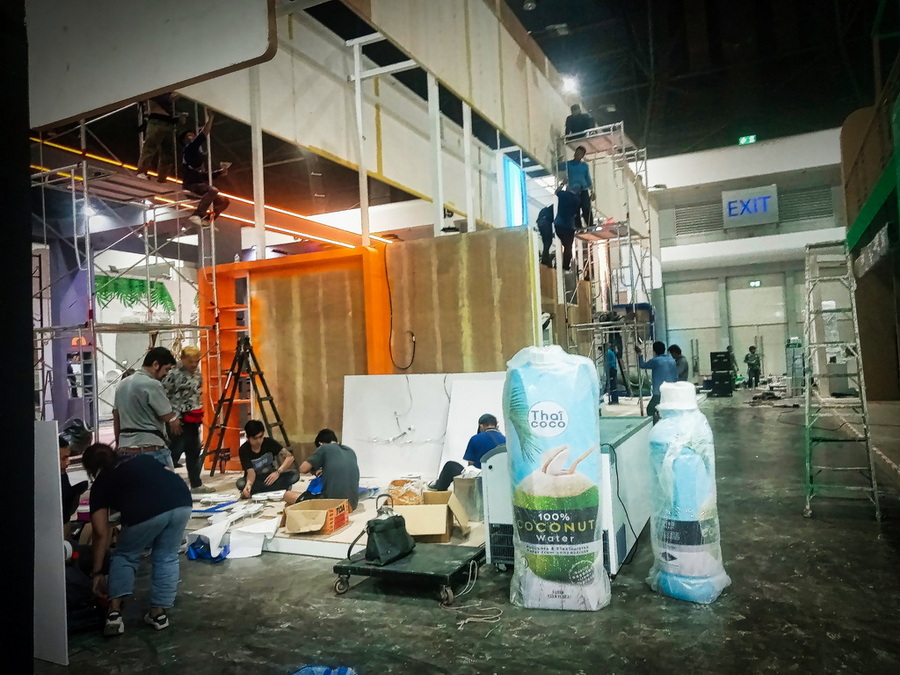
ม็อคอัพ ขวดน้ำมะพร้าว thaicoco
คราวนี้ มีงานทำม็อคอัพ เพื่อไปออกงาน thaifex ที่เมืองทองธานี เมื่อวันที่ 28 นี้ครับ เป็นม็อคอัพ ขวดน้ำมะพร้าวขนาด 1.2 เมตร และกล่องใส่ซึ่งสูง 1.5 เมตร ลักษณะงานออกแบบก็เป็นกล่อง เหลี่ยมๆ หลายๆเหลี่ยม ส่วนตัวขวดก็เป็นขวดกลมๆ แต่มีเหลี่ยมๆด้วย ซึ่งก็ไม่มีอะไรมาก ก็ขึ้นต้นแบบด้วยโฟม แล้วหล่อเป็นชิ้นงานไฟเบอร์กลาสอีกที ตรงที่ยากสุดคืองานสติ้กเกอร์ครับ เพราะ ถ้าดูเผินๆคือต้อง wrap ทั้งชิ้น งานออกแบบจะเป็นสีฟ้าๆทั้งกล่อง แล้วมี รูปใบมะพร้าว กับลูกมะพร้าวติดอยู่ทั่ว ซึ่ง การ ห่อชิ้นงานม็อคอัพ ด้วยสติ้กเกอร์ทั้งชิ้น เป็นงานที่เป็นไปไม่ได้เลยครับ ไม่เหมือนการ wrap รถทั้งคัน คุณภาพของสติ้กเกอร์ก็ไม่เหมือนกัน ไม่มีความยืดหยุ่นขนาดนั้น
เราก็เลยแก้ปัญหาด้วยการ พ่นสีรองพื้นไว้ก่อน แล้วตัดสติ้กเกอร์เป็นชิ้นๆ ให้สามารถ ติดได้โดยไม่มีการยับย่น กว่าจะเสร็จเล่นเอาเกือบเช้าเลย แต่ก็เรียบร้อยดี ส่งทันเวลากำหนด แถมมีเวลาให้ แลคเกอร์แห้งอีก เกือบๆวันนึงเต็มๆ
หากท่านสนใจสั่งทำงาน ม็อคอัพ ที่คุณภาพดี ราคาประหยัดๆ ไม่ว่าจะยากง่ายแค่ไหนเราจะหาวิธีทำให้ท่านจนได้ สามารถติดต่อสอบถามได้ที่ 0814022344 line id:anubistfx

